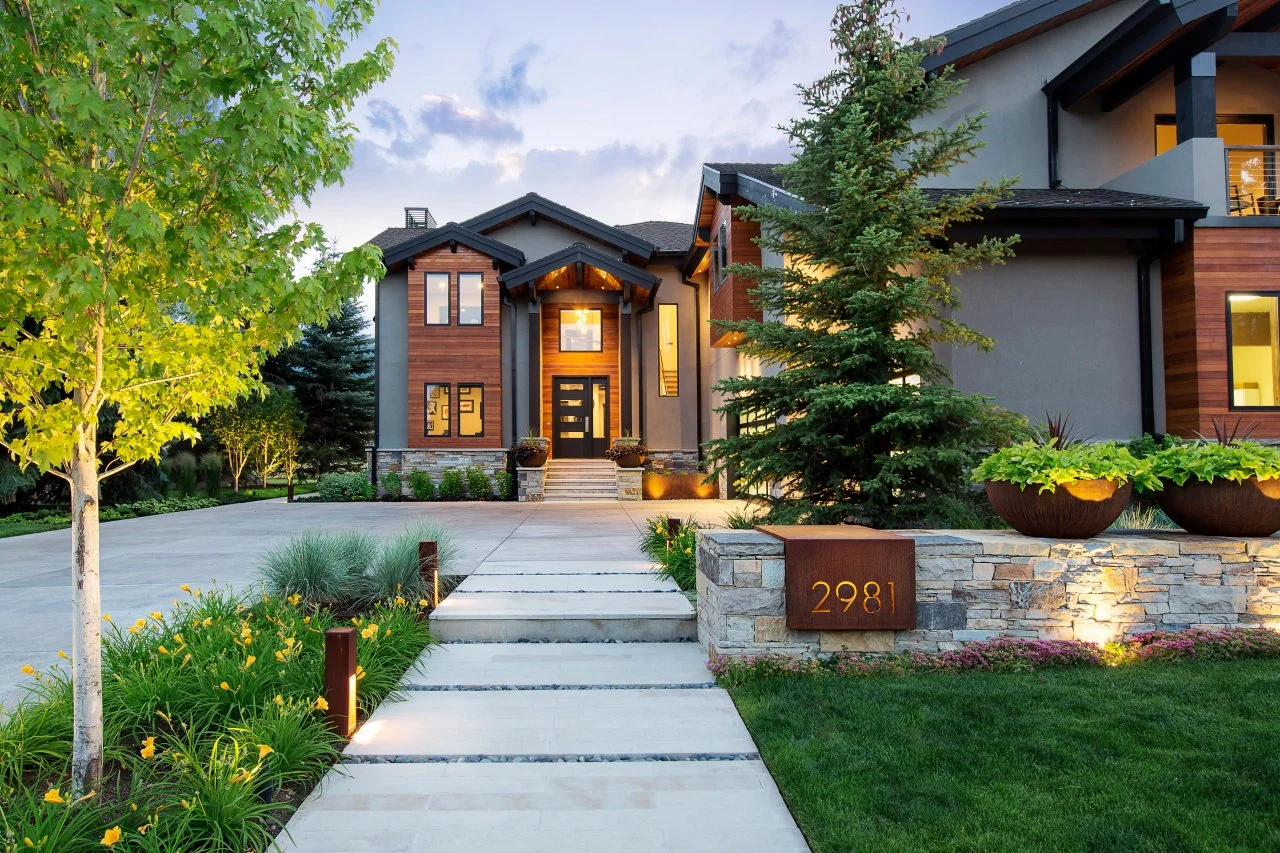As the population ages, the need for suitable living arrangements for seniors becomes increasingly important. Many older adults prefer to remain in their own homes, a concept often referred to as "aging in place." However, this choice comes with challenges, including finding affordable homes, ensuring home accessibility, and maintaining properties through necessary repairs. This blog explores these critical aspects—Homes for Seniors, Affordable Homes Nearby, Home Access, Home Repairs for Seniors, and Elderly Living at Home—to provide a comprehensive guide for seniors, their families, and caregivers.
The Importance of Aging in Place
Aging in place allows seniors to maintain independence, stay connected to their communities, and live in familiar surroundings. According to the AARP, nearly 90% of adults over 65 prefer to stay in their homes as they age. This preference underscores the need for homes that are affordable, accessible, and well-maintained to support seniors’ quality of life.
However, aging in place is not without obstacles. Homes may require modifications to accommodate mobility issues, financial constraints can limit housing options, and ongoing maintenance can become burdensome. Addressing these challenges requires a combination of practical solutions, community support, and access to resources.
Affordable Homes Nearby: Finding the Right Fit
For seniors looking to downsize or relocate, finding affordable homes nearby is a top priority. Proximity to family, healthcare facilities, and community services can significantly enhance a senior’s quality of life. Here are some strategies to locate affordable housing options:
1. Explore Senior Housing Programs
Many governments and organizations offer programs to help seniors find affordable housing. In the United States, for example, the Section 202 Supportive Housing for the Elderly program provides subsidized housing for low-income seniors. These communities often include accessibility features and access to social services, making them ideal for aging in place.
2. Consider Smaller Homes or Apartments
Downsizing to a smaller home or apartment can reduce costs related to maintenance, utilities, and property taxes. Many seniors opt for one-level homes or condos to eliminate the challenges of stairs and large yards.
3. Look into Co-Housing or Shared Living
Co-housing communities, where residents share common spaces and responsibilities, are gaining popularity among seniors. These arrangements can lower living costs while fostering social connections, which are vital for emotional well-being.
4. Research Local Incentives
Some cities offer tax breaks, grants, or subsidies for seniors to purchase or rent affordable homes. Contact local housing authorities or senior centers to learn about available programs.
5. Work with Real Estate Professionals
Real estate agents specializing in senior housing can help identify homes that meet both budgetary and accessibility needs. They can also provide insights into neighborhoods with strong community support for seniors.
By focusing on affordability and proximity to essential services, seniors can find homes that align with their financial and lifestyle needs.
Related: Top 10 Best Cheap Phone Plans for 2025: Affordable Options for Every Budget
Home Access: Making Homes Safe and Navigable
For seniors choosing to age in place, home accessibility is critical. As mobility and health needs change, homes must be adapted to ensure safety and comfort. Here are key modifications to improve home access for seniors:
1. Install Ramps and Handrails
Stairs can pose significant risks for seniors with mobility challenges. Installing ramps at entrances and handrails along staircases or hallways can prevent falls and improve navigation.
2. Widen Doorways
Standard doorways may not accommodate wheelchairs or walkers. Widening doorways to at least 36 inches allows for easier movement throughout the home.
3. Upgrade Lighting
Poor lighting can increase the risk of trips and falls. Bright, evenly distributed lighting, especially in hallways, staircases, and bathrooms, is essential. Motion-sensor lights can add convenience for seniors with limited mobility.
4. Modify Bathrooms
Bathrooms are one of the most common areas for accidents. Installing grab bars, walk-in showers, and raised toilet seats can enhance safety. Non-slip flooring and accessible vanities also make a significant difference.
5. Create Open Floor Plans
Removing unnecessary walls or furniture can create more space for mobility aids. Open floor plans also make it easier for seniors to move around without obstacles.
6. Smart Home Technology
Smart devices, such as voice-activated assistants, automated lighting, and remote-controlled thermostats, can simplify daily tasks and improve accessibility for seniors with limited mobility or dexterity.
Working with an occupational therapist or a Certified Aging-in-Place Specialist (CAPS) can help identify specific modifications tailored to a senior’s needs. Many of these changes can be funded through grants, insurance, or community programs.
Home Repairs for Seniors: Maintaining a Safe Environment
Regular home maintenance is essential to ensure a safe and comfortable living environment, but it can be challenging for seniors due to physical limitations or financial constraints. Addressing home repairs for seniors promptly can prevent small issues from becoming major hazards.
Common Repairs for Senior Homes
-
Roof and Gutter Maintenance: Leaky roofs or clogged gutters can lead to water damage, mold, and structural issues. Regular inspections and repairs are crucial.
-
Plumbing Fixes: Leaking pipes or faulty fixtures can create slip hazards and increase utility costs. Seniors may need assistance with plumbing repairs to maintain a functional home.
-
Electrical Updates: Outdated wiring or faulty outlets can pose fire risks. Upgrading electrical systems ensures safety and accommodates modern appliances.
-
HVAC Maintenance: Heating and cooling systems require regular servicing to maintain air quality and temperature control, which are vital for seniors’ health.
Resources for Home Repairs
-
Nonprofit Organizations: Groups like Rebuilding Together and Habitat for Humanity offer free or low-cost home repair services for low-income seniors.
-
Government Programs: The U.S. Department of Housing and Urban Development (HUD) and local agencies provide grants or loans for home repairs, particularly for safety-related modifications.
-
Volunteer Networks: Many communities have volunteer programs where skilled individuals assist seniors with minor repairs, such as fixing leaky faucets or painting.
-
Senior Centers: Local senior centers often connect older adults with trusted contractors or handyman services offering discounted rates.
Seniors should also consider preventative maintenance to reduce the need for costly repairs. For example, scheduling annual inspections for HVAC systems or roofs can catch issues early.
Elderly Living at Home: Holistic Support for Independence
Beyond affordability and accessibility, elderly living at home requires a holistic approach that includes emotional, social, and health-related support. Here are some key considerations:
1. Healthcare Access
Seniors aging in place need reliable access to healthcare services. Home health aides, telehealth appointments, and regular check-ups can help manage chronic conditions and prevent emergencies.
2. Social Engagement
Isolation is a significant risk for seniors living at home. Encouraging participation in community activities, senior centers, or virtual social groups can combat loneliness and improve mental health.
3. Nutrition and Meal Services
Proper nutrition is vital for seniors’ health. Programs like Meals on Wheels deliver nutritious meals to seniors, ensuring they maintain a balanced diet without the burden of cooking.
4. Transportation
For seniors who no longer drive, transportation services are essential for attending medical appointments, running errands, or visiting friends. Many communities offer free or subsidized transportation for older adults.
5. Financial Planning
Aging in place can be costly, especially with home modifications and healthcare expenses. Financial advisors or senior-focused organizations can help seniors budget for these costs and explore funding options.
6. Emergency Preparedness
Seniors should have an emergency plan, including contact numbers for family, neighbors, or caregivers. Medical alert systems can provide peace of mind by ensuring help is available in case of a fall or other emergency.
Community and Family Involvement
Supporting seniors in their homes is a collective effort. Family members can assist with tasks like coordinating repairs, researching housing options, or arranging social activities. Communities play a vital role by offering programs, resources, and volunteer support to help seniors thrive.
How Families Can Help
-
Regular Check-Ins: Frequent visits or calls can ensure seniors feel supported and allow families to identify any home maintenance or accessibility issues.
-
Advocacy: Families can research and apply for grants or services on behalf of seniors, reducing the administrative burden.
-
Emotional Support: Spending quality time with seniors can boost their morale and reinforce their desire to remain independent.
Community Resources
-
Area Agencies on Aging (AAA): These organizations provide information on housing, repairs, and support services for seniors.
-
Faith-Based Organizations: Many churches and synagogues offer volunteer services or financial assistance for seniors.
-
Local Government: City or county programs often provide resources for home modifications, tax relief, or utility assistance.
Related: Top 10 Ways to Find Affordable Used RVs and Travel Trailers in 2025
Conclusion
Aging in place is a real and fulfilling option for the majority of elderly, but it requires planning ahead and assistance. Prioritizing affordable homes nearby, enabling home access through modifications, offering home repairs for seniors, and helping older living at home with comprehensive resources, the elderly are able to live alone and with respect. Families, communities, and agencies must work together to make the environment so that seniors can remain living independently in their homes.
For those seeking to explore these options, start by assessing the senior's existing setting and requirements. Consult with professionals, involve local resources, and prioritize safety and comfort. Properly guided, seniors can enjoy the benefits of aging in place and stay engaged with their communities and support systems.














